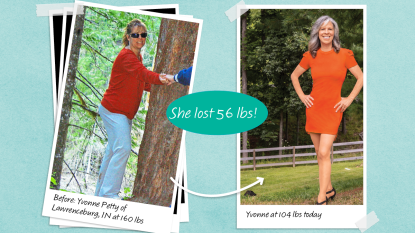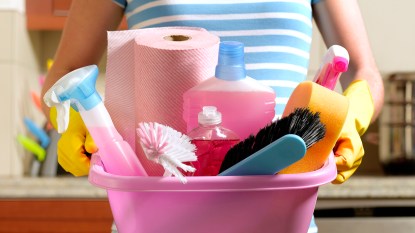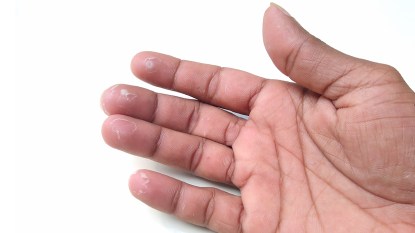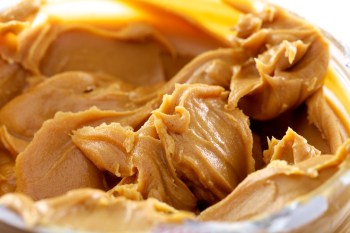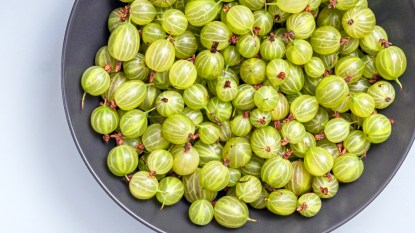Does This Common Nail Salon Tool Pose a Cancer Risk? A New Study Says Yes
Here’s what the research revealed about UV dryers.
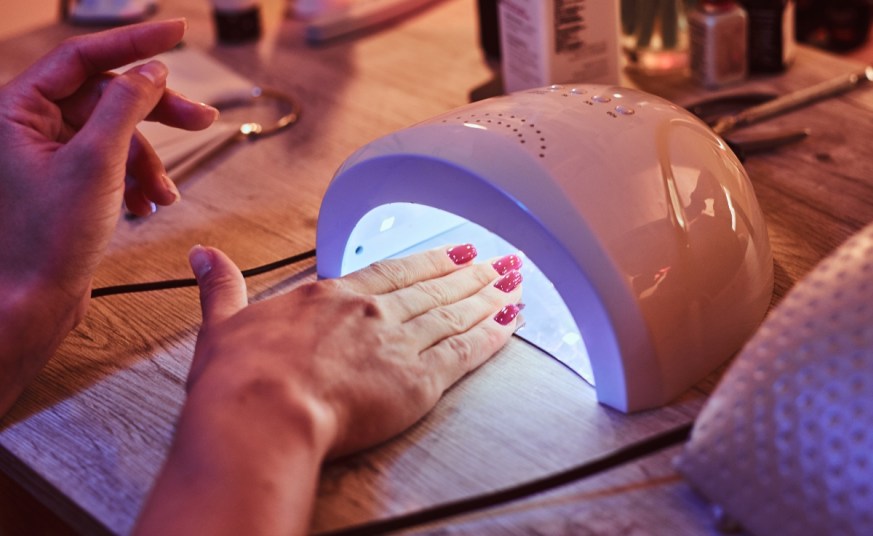
If you’ve ever walked into a nail salon, poured over colors until finding the perfect shade to match your mood, and left with a fresh gel manicure, it’s likely you’ve encountered a UV nail dryer. Salon customers place their nails under these lamps to dry them quickly. They also help gel polish last longer and retain its shine. Maybe you never questioned whether this practice is safe — it’s just a little UV light, right? Well, a study published last week presented a sobering finding: Radiation from UV nail dryers can damage DNA and even cause permanent mutations in human cells, potentially increasing your risk of skin cancer.
In recent years, gel manicures have grown in popularity for good reason. Gel polish is more durable than regular nail polish, and less likely to chip or break. But is that easy-breezy mani-pedi worth the cancer risk? Keep reading to learn more about the research and how to keep yourself safe.
The Study
In this study, researchers from the University of California San Diego and the University of Pittsburgh set out to test the UV-emitting devices using cell lines from humans and mice, and published their findings in the journal Nature Communications.
The study authors pursued this research for several reasons, the team told NPR. Firstly, frequent gel polish users (like beauty pageant contestants) had previously reported rare cancers on their nails and fingers, which some dermatologists suspected were a result of UV exposure. Additionally, while UV devices are marketed as safe (even by the FDA), the study authors were unable to find any scientific proof that UV lamps would not have an effect on human cells — even though prolonged UV exposure from the sun is a proven cause of premature aging and skin cancer. In short, UV lamps at nail salons had never been properly investigated until now.
To find out whether UV light damages cells from mammals, the study authors exposed three different cell types — two cell types from humans and one type from mice — to different durations of UV light. First, they placed one set of petri dishes in a UV machine for 20 minutes, took them out for an hour, and placed them back in for another 20 minutes. (This setup mimicked the short-term exposure one might experience in a single nail salon session.) Next, the researchers placed another set of petri dishes under the machine for 20 minutes a day for three consecutive days. (This setup mimicked long-term exposure.)
The Results
Researchers found that a single, 20-minute session resulted in 20 to 30 percent cell death, while three consecutive sessions caused 65 to 70 percent of the exposed cells to die. UV exposure also caused mitochondrial and DNA damage in the remaining cells. This study therefore proved that repeated exposure to UV light can have a damaging effect on human cells — though these findings cannot conclusively link UV light to an increased risk of skin cancer. (Prior studies have linked gene mutations to an increase in cancer risk, however.)
The study authors noted that nail salons typically have UV devices that are even stronger than those used in the study — so while your hands may be under the salon dryer for less time, the energy of the exposure could be higher.
This study was limited by its lack of human participants, as it would be unethical to risk volunteers developing skin cancer. Exposing cell lines to UV light in a petri dish is different from conducting the study on living humans and animals.
The authors additionally noted that gel manicures are a relatively new cosmetic procedure, and DNA damage can take time to build up; therefore, it’s possible even more skin cancer cases associated with UV dryers will appear over time.
“Future large-scale epidemiological studies are warranted to accurately quantify the risk for skin cancer of the hand in people regularly using UV-nail polish dryers,” the study reads. “It is likely that such studies will take at least a decade to complete and to subsequently inform the general public.”
The Precautions You Can Take
If you’re worried about the safety of gel manicures but don’t want to give them up entirely, there are precautions you can take to mitigate the risks. First, know that some people are more at risk of developing skin cancer than others: Study author Maria Zhivagui, postdoctoral researcher at UC San Diego, told NPR that older people and those with fair skin or red hair have an increased risk. Additionally, taking certain medications or supplements may make you more sensitive to UV rays. (These include antibiotics and oral contraceptives).
Here’s a list of additional steps you can take to protect yourself.
- Visit your doctor. Find a board-certified dermatologist who can check your skin regularly for early signs of skin cancer — especially if you frequently get (or used to get) gel manicures. Ask your doctor whether any medications you’re taking may increase your UV sensitivity.
- Monitor your skin. First, you need to know what you are looking for. Most people have learned to monitor their skin for signs of melanoma (e.g. checking moles and freckles for changes in shape or color). But Dr. Shari Lipner, a dermatologist and director of the Nail Division at Weill Cornell Medicine, told NPR that the type of skin cancer linked to UV dryers (known as squamous cell carcinoma) looks different. It’s rough to the touch and can appear pink or red in lighter patients, or purple to brown on darker skin.
- Apply sunscreen. Before a gel appointment, remove all cosmetics, fragrances, and skincare products from your hands, since some products can increase your sensitivity to UV rays. The one exception: sunscreen. Experts recommend applying a broad-spectrum sunscreen (SPF 30 or higher) to your hands about 20 minutes before they are exposed to UV light. Cover the tops of your hands, feet, fingers, and toes as needed.
- Wear fingerless gloves. Buy some fingerless gloves for added protection. Luckily, studies have shown nails themselves are pretty impermeable to UV light — so it’s really the skin around your nails you need to worry about.
- Limit your exposure. If you’re getting gel manicures every few weeks, try limiting that to a few times a year. Less exposure will mean less risk, so save gel polish for special occasions.
- Find an alternative nail polish. Gel manicures might be longer lasting, but they can also cause nail brittleness, peeling, and cracking, in addition to the cancer risk — so, consider polish alternatives. Dip powders, for example, air dry instead of requiring a UV light, and can last for several weeks (the downside: they usually cost more than gels). Regular nail polish similarly dries without any UV light; but you can use a fan or air blower if you want to speed up the drying process.
The Bottom Line
Dr. Julia Curtis, an assistant professor of dermatology at the University of Utah, summarized the UV dryer risks with a comparison that’s both succinct and memorable: “Tanning beds are listed as carcinogenic, and UV nail lamps are mini tanning beds for your nails,” she told CNN. (Curtis wasn’t involved in this study.)
If you are already aware of the risks associated with tanning beds, it’s time to bring that caution to the nail salon. Wanting to look and feel your best is perfectly natural — but the quest for beauty might not be worth endangering your health. So, determine the best way to mitigate the risks before your next manicure.
This content is not a substitute for professional medical advice or diagnosis. Always consult your physician before pursuing any treatment plan.






